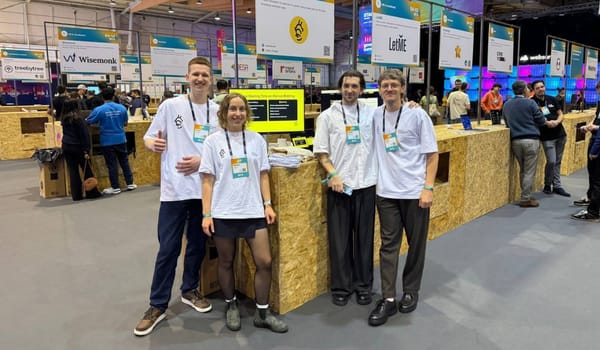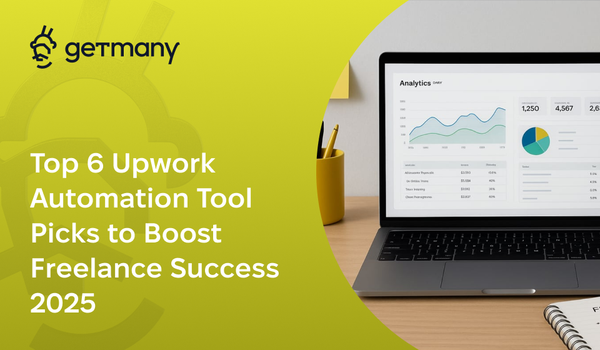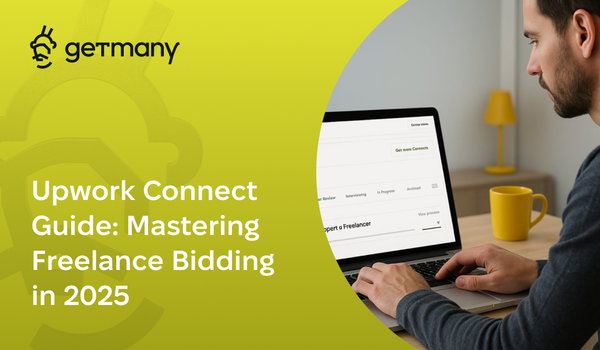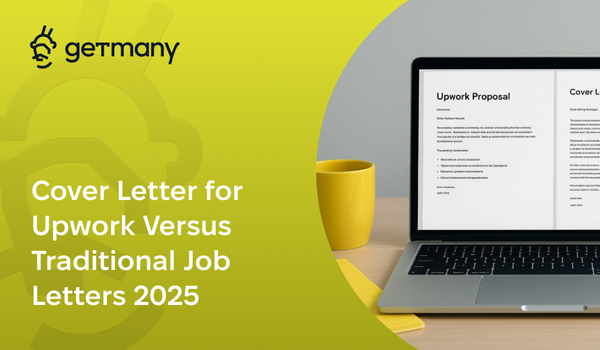How to Personalize Proposals at Scale Without Losing Quality
Send 20 highly personalized proposals daily in under 2 hours. The systematic approach that maintains 40%+ win rates while scaling your outreach 10x.
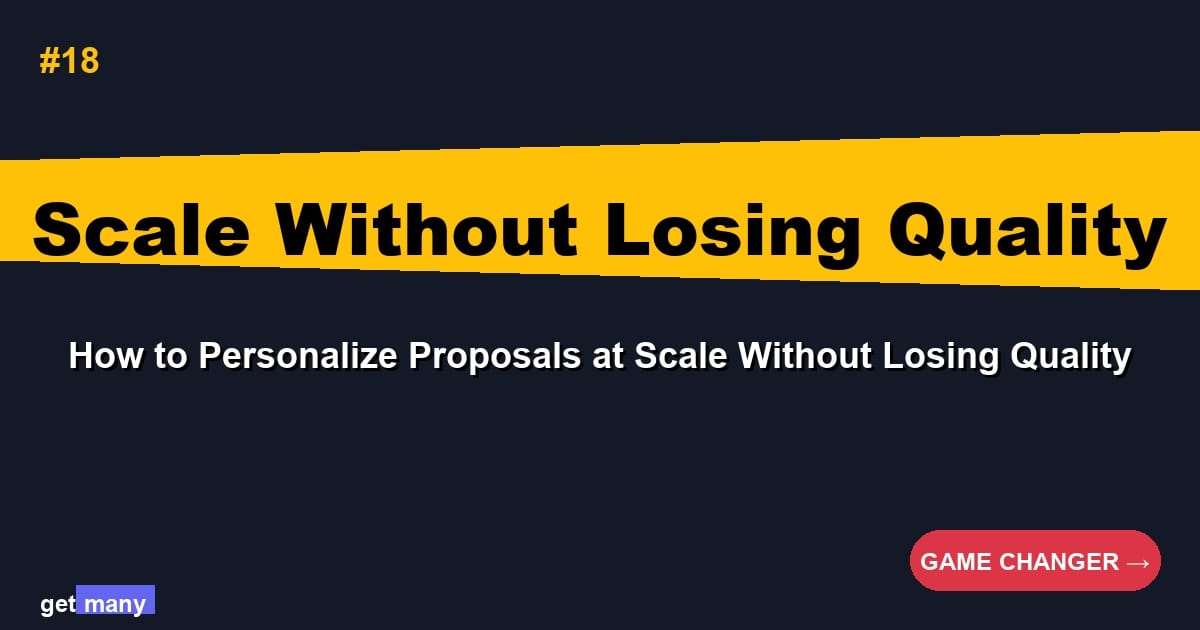
Last quarter, our agency sent 1,847 proposals. Each one personalized. Each one unique. Total time invested? 92 hours. That's 3 minutes per proposal, with a 42% response rate. The secret isn't working faster - it's building systems that scale personalization.
Most agencies face an impossible choice: send generic proposals at volume (with 2% win rates) or craft individual masterpieces (limiting you to 3-5 daily). But what if you could have both? What if you could send 20+ deeply personalized proposals daily while maintaining premium quality?
This guide reveals the exact system used by top agencies to scale personalization without sacrificing the human touch that wins projects. Master this, and watch your pipeline explode while competitors remain stuck in the time-for-money trap.
The Personalization Paradox
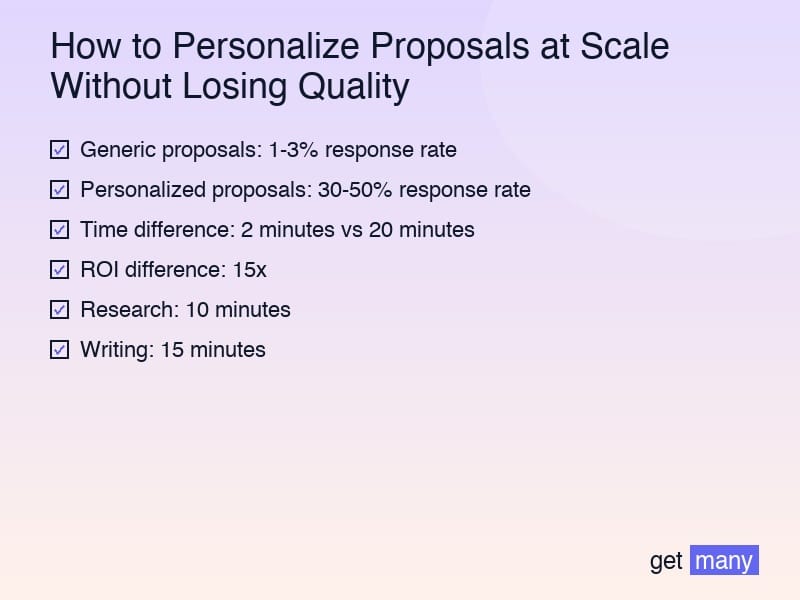
Before diving into solutions, understand the challenge:
Why Generic Fails
The Numbers Don't Lie:
- Generic proposals: 1-3% response rate
- Personalized proposals: 30-50% response rate
- Time difference: 2 minutes vs 20 minutes
- ROI difference: 15x
Client Perspective: "I can spot a template in 3 seconds. If they didn't invest time to understand my needs, why would I invest time responding?"
Why Manual Doesn't Scale
The Time Math:
- Research: 10 minutes
- Writing: 15 minutes
- Editing: 5 minutes
- Total: 30 minutes per proposal
- Daily capacity: 8-10 proposals max
At this rate, growth is impossible.
The Scalable Personalization Framework
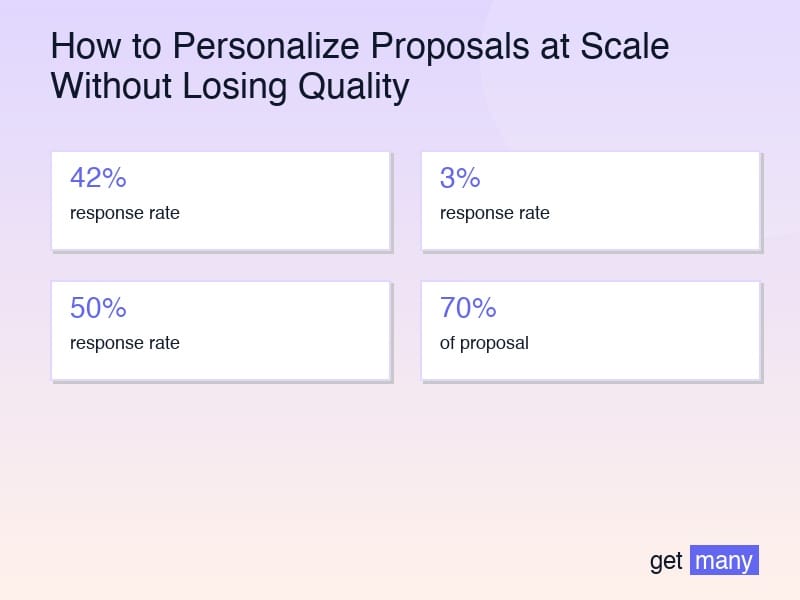
Layer 1: The Modular System
Think of proposals like LEGO blocks, not manuscripts:
Core Modules (70% of proposal):
- Problem diagnosis frameworks
- Solution methodologies
- Proof points and case studies
- Process explanations
- Closing statements
Personalization Points (30% of proposal):
- Client name and company details
- Specific problem language
- Industry terminology
- Recent company events
- Unique observations
The Magic: Pre-written excellence + targeted customization = perceived full personalization
Layer 2: The Research Acceleration System
Cut research from 10 minutes to 90 seconds:
The 90-Second Research Protocol:
0-30 seconds: Job Post Analysis
- Problem keywords (highlight/copy)
- Budget and timeline
- Technical requirements
- Pain points mentioned
- Decision criteria
31-60 seconds: Company Quick Scan
- Company website (10-second scan)
- Recent news (Google "[company] news")
- LinkedIn company page
- Obvious challenges
- Industry position
61-90 seconds: Insight Generation
- Connect their problem to your solution
- Identify unique angle
- Note personalization hooks
- Form opening line
- Select relevant proof points
Research Tools for Speed:
- Browser bookmarks for quick access
- Text expander for common searches
- News aggregators by industry
- LinkedIn Sales Navigator
- Company information databases
Layer 3: The Template Intelligence System
Smart templates that think for you:
Dynamic Template Structure: ``` [HOOK - Personalized based on research]
[DIAGNOSIS - Modular paragraphs selected based on problem type]
[SOLUTION - Pre-written but arranged based on priorities]
[PROOF - Case studies filtered by relevance]
[CLOSE - Customized call-to-action] ```
Template Variables:
- {{company_name}}
- {{specific_problem}}
- {{industry_term}}
- {{timeline_mention}}
- {{budget_reference}}
- {{unique_observation}}
Conditional Logic:
- IF budget > $10k THEN include enterprise proof
- IF urgent timeline THEN emphasize speed
- IF technical project THEN add certifications
- IF previous bad experience THEN include trust-building
The Personalization Tech Stack
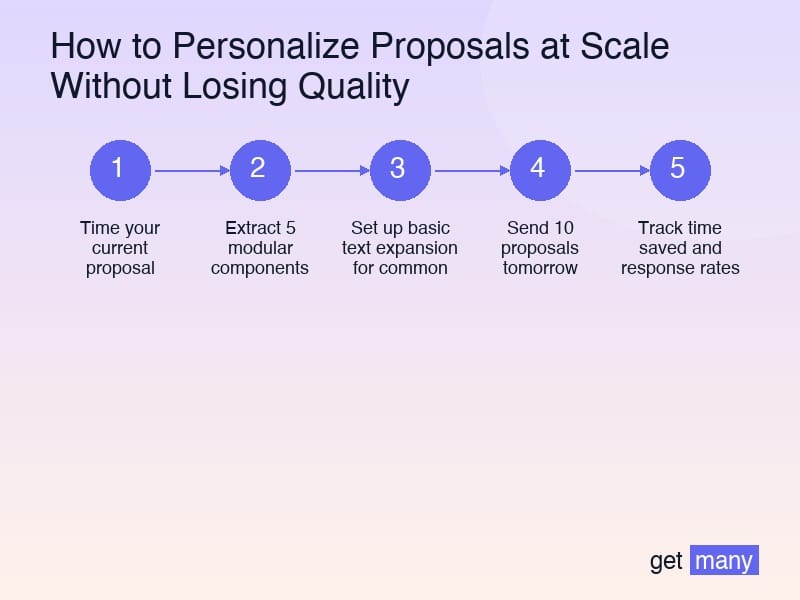
Essential Tools
1. Text Expansion Software
- TextExpander or PhraseExpress
- Create snippets for common paragraphs
- Use shortcuts for complex terms
- Build variable-based templates
- Track usage statistics
Example Snippets:
- `;prop1` → Full problem diagnosis paragraph
- `;saas` → SaaS-specific solution approach
- `;proof47` → 47% conversion improvement case study
- `;close3` → Urgency-based closing
2. Research Aggregators
- Clearbit Connect for company data
- Hunter.io for contact research
- BuiltWith for tech stack insights
- SimilarWeb for traffic estimates
- Google Alerts for recent news
3. Proposal Management Systems
- Airtable for template organization
- Notion for knowledge base
- Google Sheets for tracking
- Slack for team coordination
- Getmany for automation
Automation Workflows
The Proposal Assembly Line:
Stage 1: Opportunity Qualification (30 seconds)
- RSS feed delivers matching jobs
- Quick scoring algorithm
- Auto-categorization by type
- Priority assignment
Stage 2: Research Automation (60 seconds)
- Scripts pull company data
- News aggregation runs
- Previous similar proposals surface
- Relevant templates suggested
Stage 3: Proposal Generation (90 seconds)
- Select template framework
- Insert personalization variables
- Choose relevant modules
- Add unique insights
Stage 4: Quality Check (30 seconds)
- Spelling/grammar check
- Personalization verification
- Link functionality test
- Final approval
Total Time: 3.5 minutes per proposal
Personalization Strategies by Proposal Volume
Low Volume (5-10 daily): Deep Personalization
Research Depth: 3-5 minutes per opportunity Personalization Level: 40-50% unique content Tools Needed: Basic text expander
Strategy:
- Extensive company research
- Custom diagrams/mockups
- Detailed problem analysis
- Highly specific solutions
- Personal video messages
Medium Volume (10-20 daily): Smart Personalization
Research Depth: 90 seconds per opportunity Personalization Level: 25-30% unique content Tools Needed: Full automation stack
Strategy:
- Modular paragraph system
- Dynamic template selection
- Quick company scan
- Relevant case studies
- Personalized opening/closing
High Volume (20+ daily): Surgical Personalization
Research Depth: 45 seconds per opportunity Personalization Level: 15-20% unique content Tools Needed: AI-assisted systems
Strategy:
- Hyper-efficient templates
- Key word matching
- Single unique insight
- Proof point rotation
- A/B tested frameworks
The Module Library System
Build once, use forever:
Problem Diagnosis Modules
Module Categories:
- Technical debt scenarios
- Growth stagnation patterns
- Conversion problems
- Scaling challenges
- Competition pressures
Module Structure: ``` [Problem Statement - 1 sentence] [Why This Happens - 2 sentences] [Cost of Inaction - 1 sentence with metric] [Transition to Solution - 1 sentence] ```
Example Module: "Your checkout process is losing 68% of potential customers. This typically happens when [form complexity/trust signals/technical issues] create friction at the critical moment. Every day of delay costs approximately $[calculation] in lost revenue. Here's how we fix it..."
Solution Approach Modules
Framework Types:
- Audit-first approaches
- Rapid iteration methods
- Phased transformations
- Sprint-based delivery
- Continuous optimization
Customization Points:
- Timeline adjustments
- Scope modifications
- Resource allocations
- Priority reordering
- Metric targets
Proof Point Modules
Organization Method:
- By industry vertical
- By problem type
- By solution approach
- By company size
- By outcome metric
Rotation Strategy:
- Track usage frequency
- Test performance data
- Update quarterly
- Retire underperformers
- Add fresh wins
Quality Control at Scale
The Three-Layer Quality System
Layer 1: Automated Checks
- Grammar and spelling
- Variable completion
- Link validation
- Format consistency
- Length optimization
Layer 2: Spot Checks
- Random 10% audit
- Team peer review
- Client feedback tracking
- Win rate analysis
- Response monitoring
Layer 3: Continuous Improvement
- Weekly module updates
- Monthly template refresh
- Quarterly strategy review
- Annual system overhaul
Personalization Metrics
Track Everything:
- Response rate by personalization level
- Time invested vs. project value
- Module performance statistics
- Template conversion rates
- Research ROI calculations
Key Ratios: ``` Personalization ROI = (Win Rate × Average Project Value) / Time Invested
Target: 10x minimum ROI on personalization time ```
Common Scaling Mistakes
Mistake 1: Over-Automation
Problem: Losing human touch entirely Solution: Maintain 15% minimum unique content
Mistake 2: Template Rigidity
Problem: Forcing wrong templates on opportunities Solution: Build flexible, modular systems
Mistake 3: Research Paralysis
Problem: Spending too long researching Solution: Time-box research strictly
Mistake 4: Quality Drift
Problem: Standards slip as volume increases Solution: Regular audits and team training
Mistake 5: Metric Blindness
Problem: Not tracking what matters Solution: Dashboard for key metrics
Your 30-Day Implementation Plan
Week 1: Foundation Building
- Document your best proposals
- Extract modular components
- Create initial template library
- Set up text expansion tools
Week 2: System Development
- Build research workflows
- Create personalization checklists
- Implement quality controls
- Test with 5 proposals daily
Week 3: Scale Testing
- Increase to 10-15 daily
- Refine based on response rates
- Optimize time per proposal
- Build team playbooks
Week 4: Full Implementation
- Scale to target volume
- Track all metrics
- Iterate based on data
- Plan next optimizations
The Personalization Evolution
Level 1: Manual Everything (Beginner)
- 30 minutes per proposal
- 5 proposals daily max
- High quality, low volume
Level 2: Basic Templates (Intermediate)
- 15 minutes per proposal
- 10 proposals daily
- Moderate quality, moderate volume
Level 3: Smart Systems (Advanced)
- 5 minutes per proposal
- 20+ proposals daily
- High quality, high volume
Level 4: AI-Augmented (Expert)
- 2-3 minutes per proposal
- 50+ proposals daily
- Premium quality at scale
The Scale Mindset
Personalization at scale isn't about shortcuts - it's about systems. Every minute saved through smart processes is a minute invested in winning more projects.
Core Principles:
- Build once, use many times
- Personalize what matters most
- Measure everything religiously
- Iterate based on data
- Never sacrifice core quality
Your immediate action steps:
- Time your current proposal process to establish baseline
- Extract 5 modular components from your best proposals
- Set up basic text expansion for common phrases
- Send 10 proposals tomorrow using new system
- Track time saved and response rates
The agencies dominating Upwork aren't working harder - they're working smarter. Personalization at scale is their secret weapon.
Ready to 10x your proposal output without sacrificing quality? The system is proven. The tools are available. The opportunity is massive.
How many perfect proposals will you send tomorrow?


